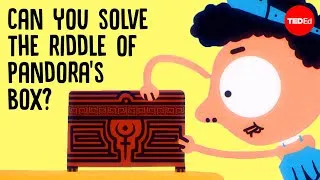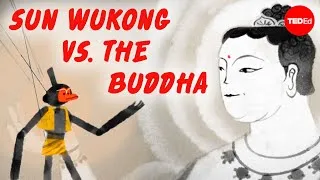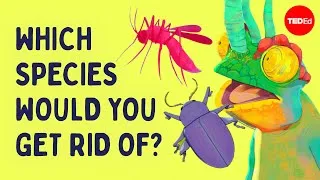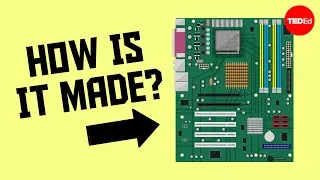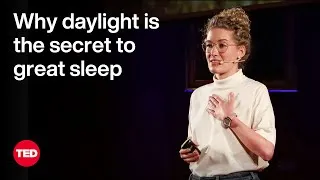請雙擊下方英文字幕播放視頻。
譯者: Wei-Yu Shih
審譯者: Helen Chang
00:06
In 2009, a satellite circled Earth,
0
6746
2875
在2009年,一顆衛星環繞著地球,
00:09
methodically scanning and sorting
the wavelengths
1
9621
2458
有計畫性的掃描和揀選
00:12
reflecting off the planet’s surface.
2
12079
2084
從地表反射的波長。
00:14
Researchers were looking for the spectral
signature of carbon dioxide
3
14163
3708
研究人員本來在尋找
二氧化碳的光譜特徵,
00:17
when they noticed something baffling:
4
17871
1792
但他們發現了令人疑惑的東西:
00:19
an unexpected wavelength
of unknown origin.
5
19663
2875
一種意外、來源不明的波長。
00:22
They tried looking at Earth
with only this wavelength,
6
22621
3083
他們試著只用這個波長來看地球,
00:25
and saw the planet covered
in a red hue of varying intensity.
7
25704
3792
發現地表被不同亮度的
紅色光芒所覆蓋。
00:29
This couldn’t have been reflected sunlight
8
29496
2000
這不可能是太陽光的反射,
00:31
because it was a wavelength that never
escapes the Sun’s outer atmosphere.
9
31496
3750
因為這個波長無法穿過
太陽的外大氣層。
00:35
And it didn’t correspond
with densely populated areas,
10
35287
2625
而且它和人口密度也無關,
00:37
suggesting it wasn’t human-made either.
11
37912
2542
代表並非人為的。
00:40
In fact, it was emanating
from places with lots of plants:
12
40704
3875
事實上,它從有很多植物的
地方散發出來:
00:44
the Amazon basin,
northern evergreen forests,
13
44579
2625
像是亞馬遜盆地、北方的常綠林、
00:47
and croplands of the Midwestern US
were all ablaze.
14
47204
3958
美國中西部的農田,
全都在發光。
00:51
So, what was going on?
15
51162
2084
所以這是怎麼一回事?
00:53
Plants and other organisms use light
to grow by way of photosynthesis.
16
53579
4583
植物和其他生物利用光來生長,
這個過程叫做光合作用。
00:58
But that’s just one of three
ways that light
17
58162
2459
但這只是光在這個過程中的
01:00
entering a photosynthetic organism
is used.
18
60621
2750
三個作用方式之一。
01:03
And this is the key to solving
the mystery.
19
63371
2792
而這就是解開謎題的關鍵。
01:06
To understand the others,
we need to begin with photosynthesis.
20
66163
3708
為了要了解其他方式,
我們需要先從光合作用說起。
01:09
During this process,
21
69871
1292
在這個過程中,
01:11
sunlight hits structures within a plant’s
cells called chloroplasts,
22
71163
4083
陽光會接觸到植物細胞內
叫做葉綠體的構造,
01:15
which are packed
with chlorophyll pigments.
23
75246
2250
裡面有很多的葉綠素。
01:17
When chlorophyll molecules absorb light,
some of their electrons become excited.
24
77496
4042
當葉綠素分子吸收光後,
部分的電子會被激發。
01:21
They go through a series of reactions,
25
81746
2000
這些電子經過一系列反應,
01:23
which transform light energy
into chemical energy.
26
83746
3417
將光能轉變成化學能。
01:27
This powers the conversion of carbon
dioxide and water into glucose,
27
87163
4166
這個過程將二氧化碳和水
轉換成葡萄糖,
01:31
the simple sugar plants need to grow.
28
91329
2375
一種植物生長所需要的單醣。
01:33
And of course, this reaction generates
an important byproduct.
29
93704
3625
當然,這些反應也會產生
一個重要的副產物。
01:37
Photosynthesis—
30
97454
1125
光合作用,
01:38
which is constantly being carried
out by plants, algae, and bacteria—
31
98579
3709
這個植物、藻類和細菌
不斷在進行的活動,
01:42
produces all of Earth’s oxygen.
32
102579
2542
產生了全地球的氧氣。
01:46
But plants regularly absorb more light
than they’re able to consume.
33
106079
3750
但植物通常會吸收超過
它所能消耗的陽光。
01:49
For instance, over winter,
34
109829
1792
舉例來說,在冬天,
01:51
the frozen leaves of evergreen trees can't
photosynthesize at their usual rate,
35
111621
4708
長青樹上結冰的葉子沒有辦法
像平常一樣進行光合作用,
01:56
but they're still exposed
to a lot of sunlight.
36
116329
2292
但他們還是會照到陽光。
01:58
If not dealt with, the excess light can
damage their photosynthetic machinery.
37
118954
3959
如果沒有解決這個問題,
多餘的光會破壞光合作用的系統。
02:03
So, the second way plants use light
is by transforming it into heat
38
123329
4250
因此,第二種植物使用光的方法
就是將其轉換為熱能,
02:07
and dissipating it out of their leaves.
39
127579
2167
然後從葉子散熱。
02:10
The third way plants interact
with incoming light
40
130038
2416
第三種植物與光的作用
02:12
is by radiating it back out
at a different wavelength,
41
132454
2959
則是用不同波長,將它反射回去,
02:16
producing what’s called
chlorophyll fluorescence.
42
136163
3208
產生所謂的葉綠素螢光。
02:19
During photosynthesis,
the chlorophyll’s excited electrons
43
139621
3125
在光合作用中,
葉綠素內的激發態電子
02:22
move through that series
of chemical reactions.
44
142746
2667
會經過一連串的化學反應。
02:26
But as some of the excited electrons
fall back to their ground states,
45
146038
4000
但當部分電子還原到它們的基態時,
02:30
they emit energy as light.
46
150038
1708
它們會將光能釋放出來。
02:32
Overall, about 1% of the light
absorbed is re-emitted
47
152829
3667
整體來說,大約百分之一
被吸收的光會被排出,
02:36
as wavelengths at the red
end of the spectrum.
48
156496
2625
成為光譜上紅色端的波長。
02:40
It’s such a small amount that you
can’t see it with the naked eye.
49
160204
3167
不過量太少,無法用肉眼看見。
02:43
But plants the world over are fluorescing
as they photosynthesize.
50
163663
4166
但全世界的植物在行光合作用同時,
都會發出紅色光芒。
02:48
And this is what’s caused
the Earth’s baffling red glow,
51
168246
4125
這就是地球產生神秘紅光的原因,
02:52
as observed by satellite.
52
172371
1792
就像衛星觀測到的那樣。
02:54
It was an accidental discovery,
but a huge breakthrough.
53
174288
3125
雖然是意外的發現,
但這是一個突破。
02:57
Tracking chlorophyll fluorescence
from space
54
177413
2125
從太空中追蹤葉綠素螢光
02:59
allows us to watch the planet breathe
in real time—
55
179538
3416
讓我們能即時看到地球在呼吸,
03:02
and monitor the health
of ecosystems worldwide.
56
182954
3042
並監測全世界生態系統的健康。
03:06
Previously, researchers used levels
of greenness
57
186371
3125
在這之前,研究人員是用綠色程度
03:09
as the main estimate for plant health.
58
189496
2083
當作計算地球健康的主要依據。
03:11
Because plants generally change colors
or lose foliage when they’re stressed,
59
191579
4042
植物遇到逆境時會變色或落葉,
03:15
higher levels of green typically
indicate healthier plants.
60
195621
3375
所以高綠度通常能當作
植物健康的指標。
03:19
But this measure can be unreliable.
61
199579
1917
但這個方法並不可靠。
03:21
In contrast, chlorophyll fluorescence
is a direct measure
62
201829
3834
相反的,透過葉綠素螢光
能夠直接地測量
03:25
of photosynthetic activity.
63
205663
1875
光合作用的狀況。
03:27
It can help us infer how much
oxygen is being released
64
207538
3041
這能幫助我們推估
被排出的氧氣量,
03:30
and how much carbon is being absorbed
in a given system.
65
210579
2959
以及在一個系統中
有多少碳被吸收。
03:34
Drops in chlorophyll fluorescence
may also occur
66
214246
2583
葉綠素螢光的減少甚至可在
03:36
before visible signs of plant stress,
making it a timely measure.
67
216829
4542
觀察到植物逆境之前發生,
讓這個數字更加即時。
03:41
Scientists have already used chlorophyll
fluorescence to monitor
68
221371
3917
科學家已使用葉綠素螢光來監測
03:45
harmful phytoplankton blooms,
69
225288
2000
有害浮游植物的增生、
03:47
and track the effects of drought
in the Amazon and Great Plains.
70
227288
3333
和追蹤亞馬遜和大平原的乾旱
所造成的影響。
03:50
Going forward, we’ll be investigating
photosynthesis from space,
71
230746
4083
未來我們會持續從外太空
研究光合作用,
03:54
and gauging how best to support
our silent friends,
72
234829
2917
然後評估幫助我們
安靜好友的最佳辦法,
03:57
who already do so much for us.
73
237746
2667
畢竟它們已經為我們做這麼多了。
New videos
關於本網站
本網站將向您介紹對學習英語有用的 YouTube 視頻。 您將看到來自世界各地的一流教師教授的英語課程。 雙擊每個視頻頁面上顯示的英文字幕,從那裡播放視頻。 字幕與視頻播放同步滾動。 如果您有任何意見或要求,請使用此聯繫表與我們聯繫。


